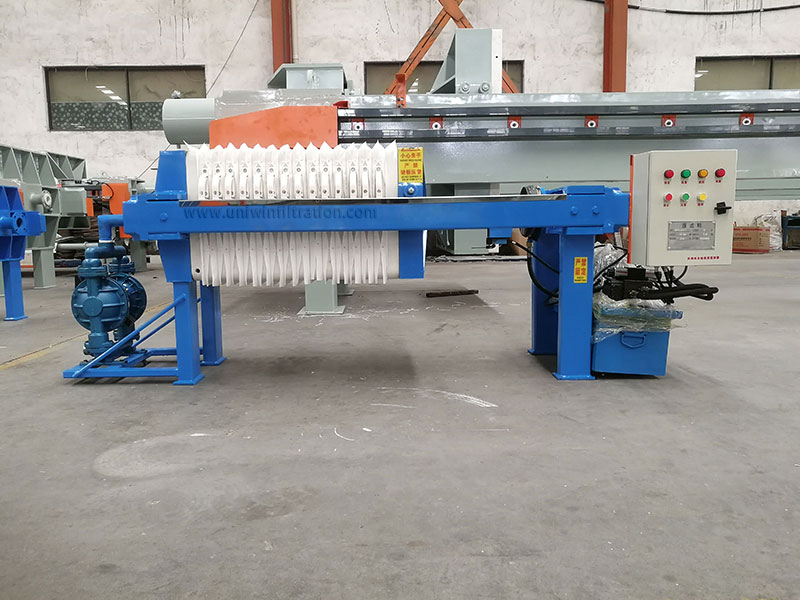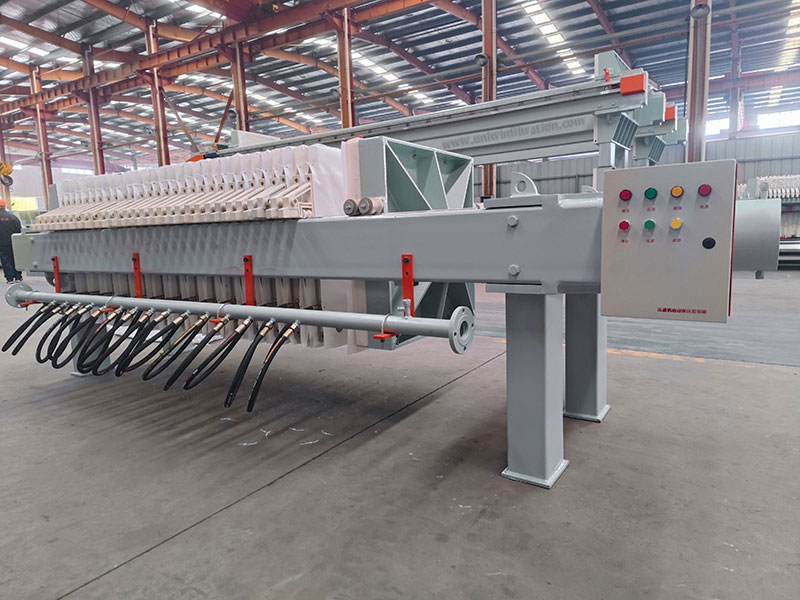Diaphragm Filter Press VS Chamber Filter Press
Diaphragm filter press and chamber filter press have obvious differences in structural design, dehydration effect, operation mode, operating cost, and applicable working conditions. The following is their core comparative analysis to help users choose the appropriate filter press equipment according to their actual needs.
Differences Between Chamber Filter Press and Diaphragm Filter Press
Basic structure and working principle
The filter chamber is formed by filter plates and filter cloths, and the slurry is pressed into the chamber by the feed pump, and the solid-liquid separation is achieved by pump pressure. The dehydration process completely relies on the pressure of the feed pump, and a high moisture content remains after filtration. The filter plates of the recessed chamber filter press are all unified chamber filter plates.
On the basis of the chamber structure, an elastic membrane layer (rubber or PP diaphragm) is added to each filter plate.
After the initial filtration, the filter cake is squeezed for the second time by injecting gas or liquid into the diaphragm to expand it, further reducing the moisture content. The filter plate structure of the diaphragm filter press is an alternating arrangement of ordinary filter plates and diaphragm filter plates.

Operation method
In daily operation, the use of a chamber filter press is relatively simple. The whole process basically relies on manual or semi-automatic control, and the operation logic is intuitive, which is suitable for on-site personnel to quickly get started.
In contrast, the operation process of the membrane filter press is more complicated, but more efficient. After completing the ordinary filtration process, the equipment also needs to start the diaphragm pressing system. This link injects compressed air or high-pressure water into the built-in diaphragm of the filter plate to expand it and apply secondary squeezing force to the filter cake, thereby significantly reducing the moisture content.
Filtration effect
First, in terms of the dehydration effect, the membrane filter press significantly reduces the moisture content of the filter cake through secondary pressing, while the recessed filter press only relies on the pressure of the feed pump, and the moisture content of the filter cake is relatively high. For working conditions that require subsequent drying or direct stacking, the membrane filter press can more effectively reduce the volume of the filter cake and transportation costs.

Filtration cycle
The filtration cycle is also significantly different. After the initial filtration, the membrane can quickly squeeze out excess water, and the overall operation time is shorter, while the chamber filter press requires a longer filtration time to achieve a similar dehydration effect. Therefore, in a unit of time, the diaphragm filter press can process more materials and is more efficient.
Filter cake quality
From the perspective of filter cake quality, the filter cake produced by the diaphragm filter press is dense, uniform, and easy to unload, which reduces the clogging of the filter cloth and manual intervention; while the filter cake of the chamber filter press may be of different thicknesses due to uneven feeding or insufficient pressure, affecting the unloading efficiency.
Operation cost and maintenance
Although the diaphragm filter press increases the pressing link, the filtration cycle is shorter, and the overall energy consumption is not much different.
The diaphragm system is prone to aging and needs to be replaced regularly, and the maintenance cost is relatively high. At the same time, the ordinary filter press has a simple structure and a low failure rate.

Scope of application
Diaphragm filter press is suitable for projects that require high filter cake dryness, such as urban sludge and chemical slurry.
Chamber filter press is suitable for projects that do not require high moisture content and have a limited budget, such as sand washing and slurry pretreatment.
Conclusion
The difference between a diaphragm filter press and a chamber filter press will affect the choice of machine. The specific choice of equipment should be considered comprehensively based on material characteristics, budget level, and production needs.

